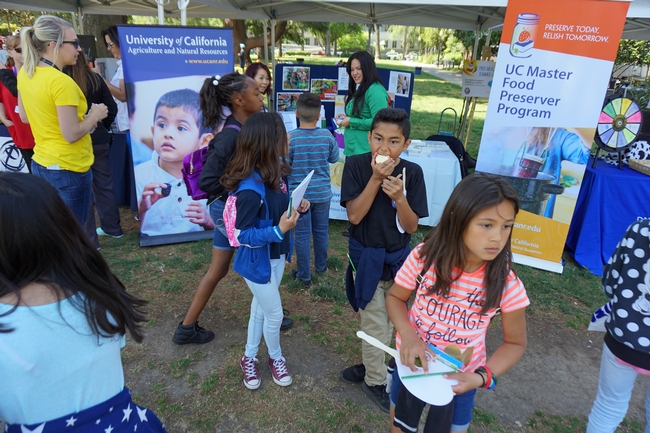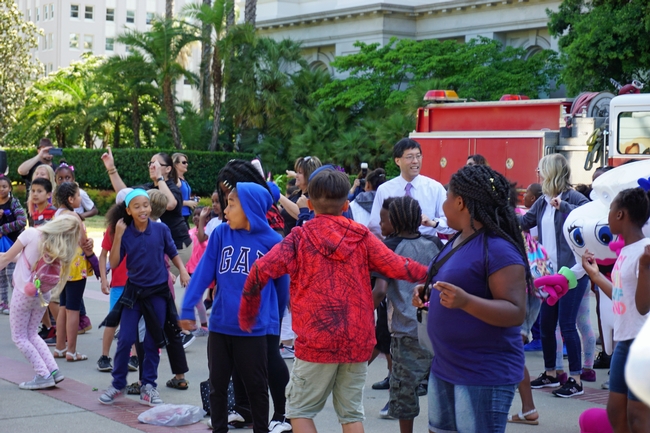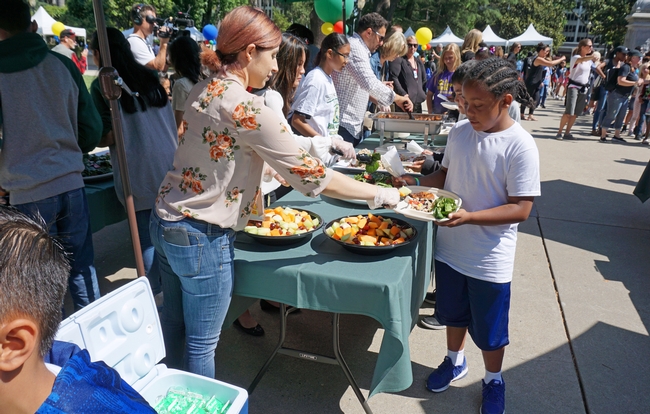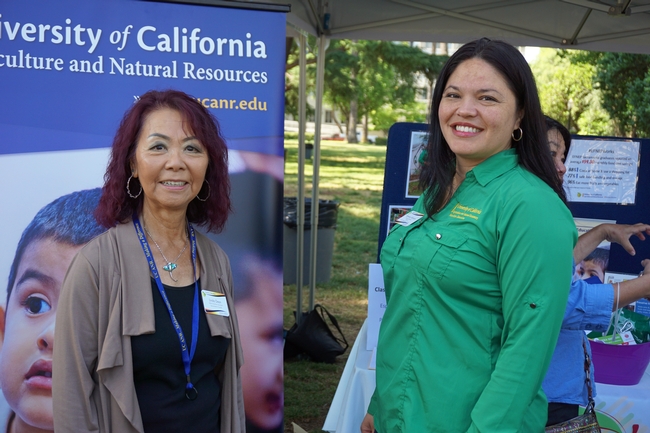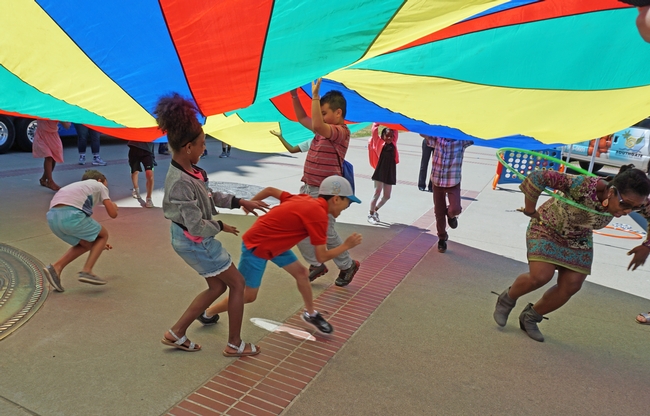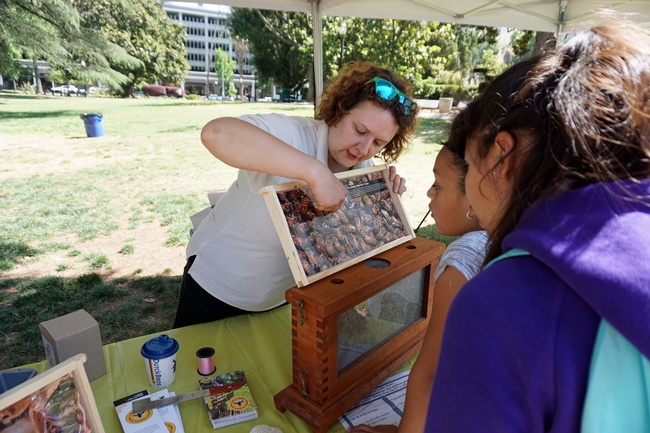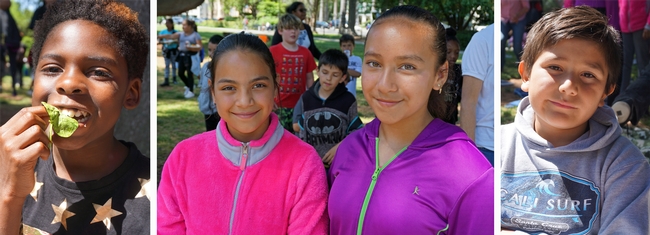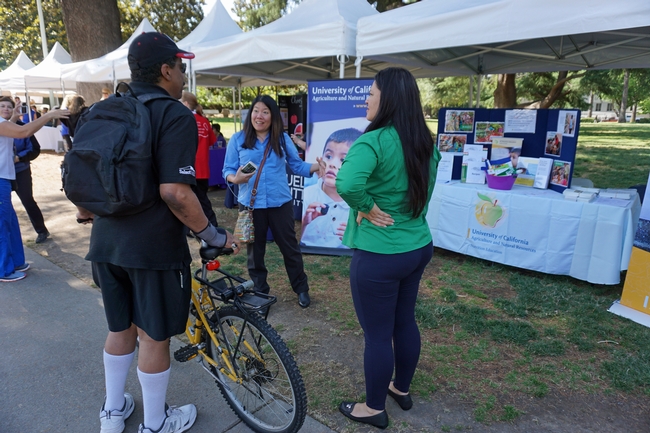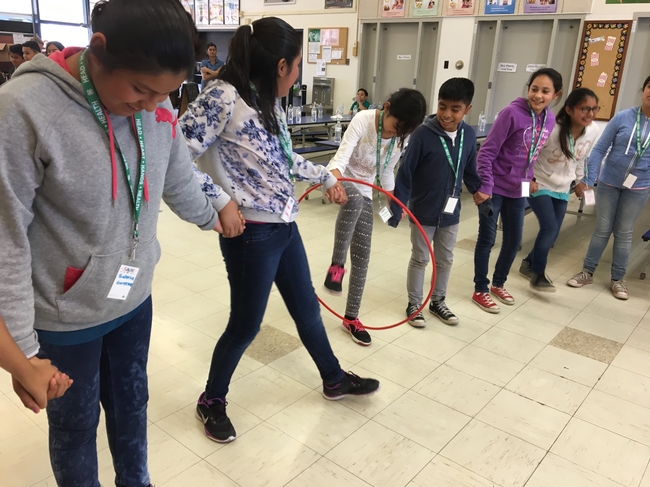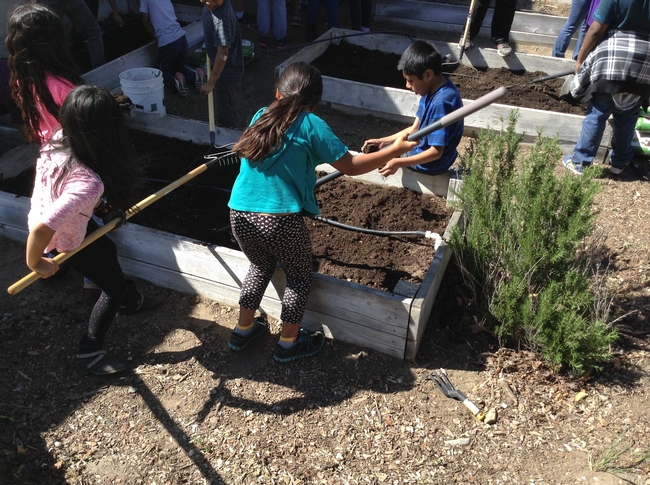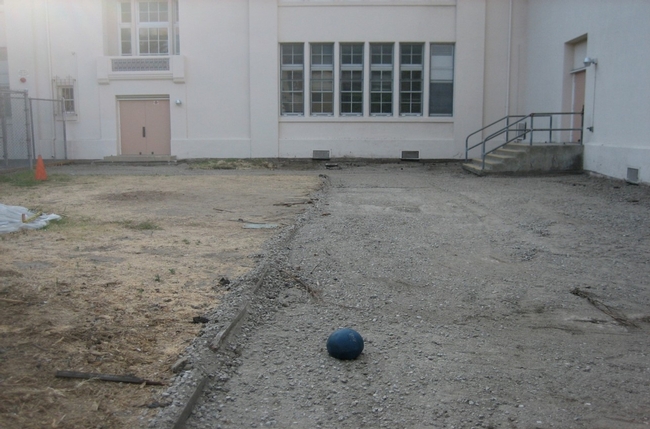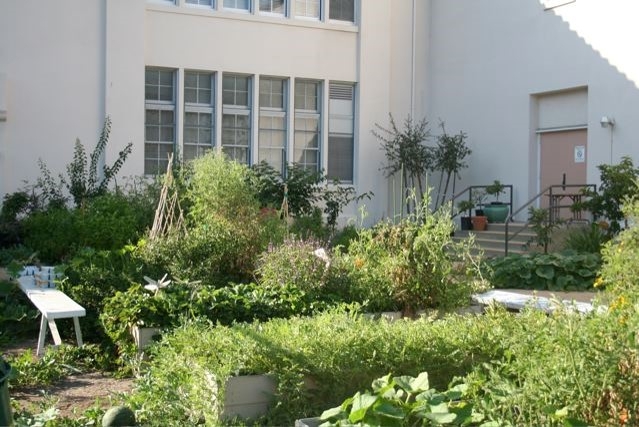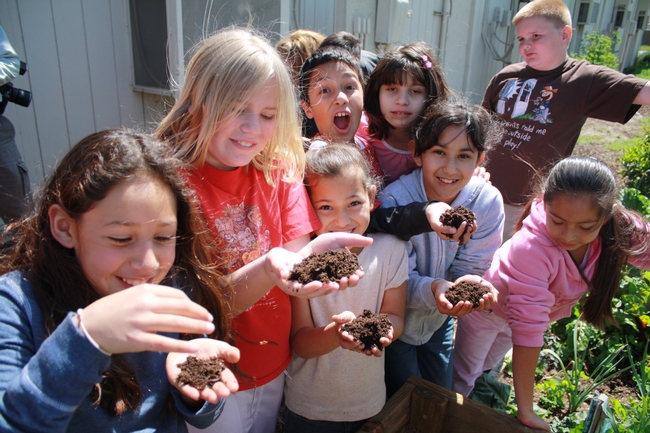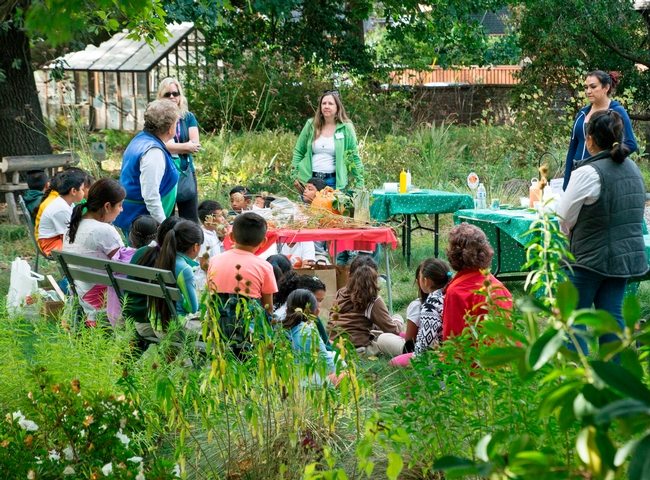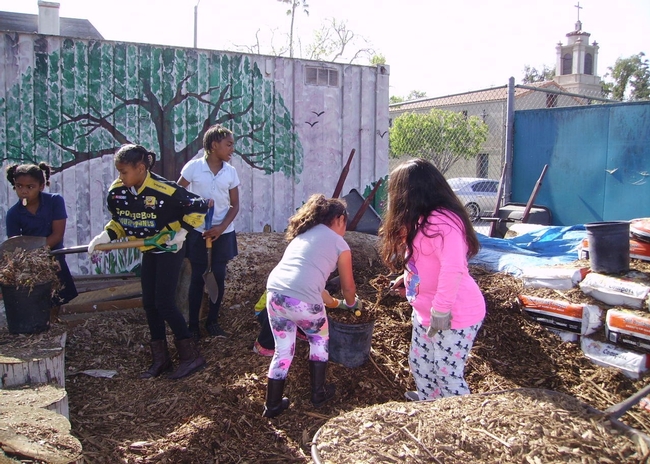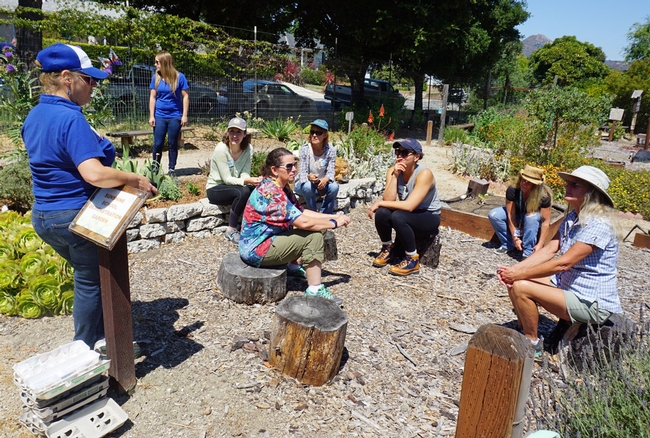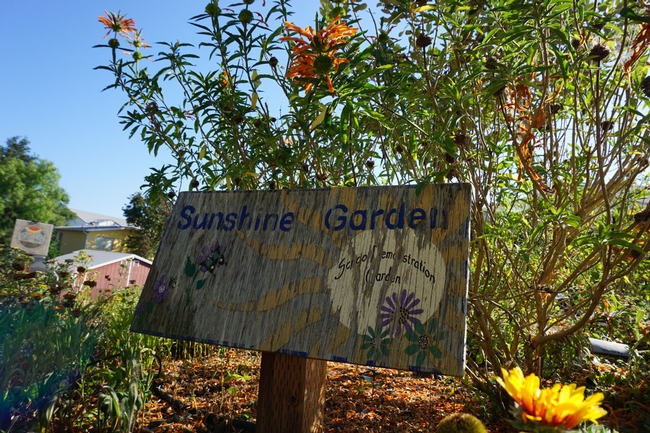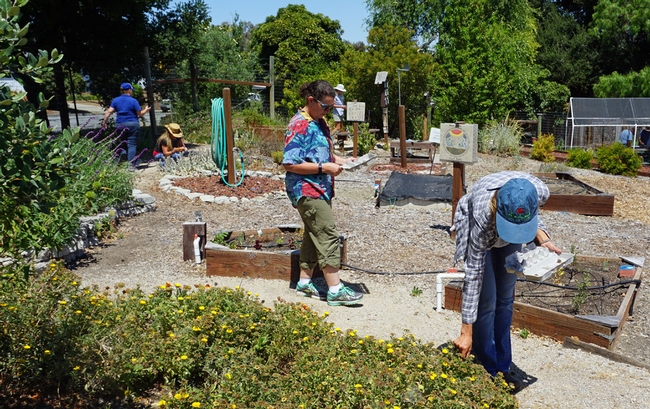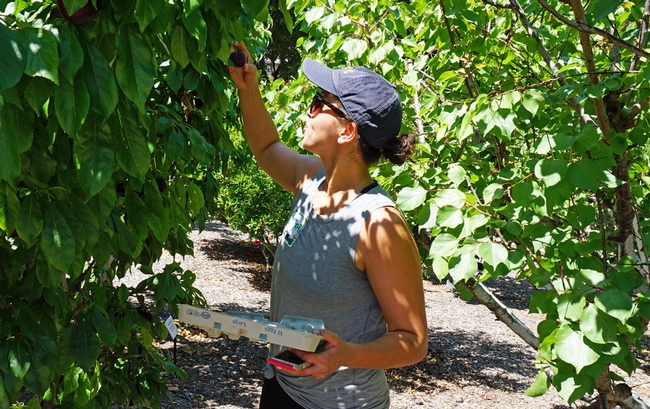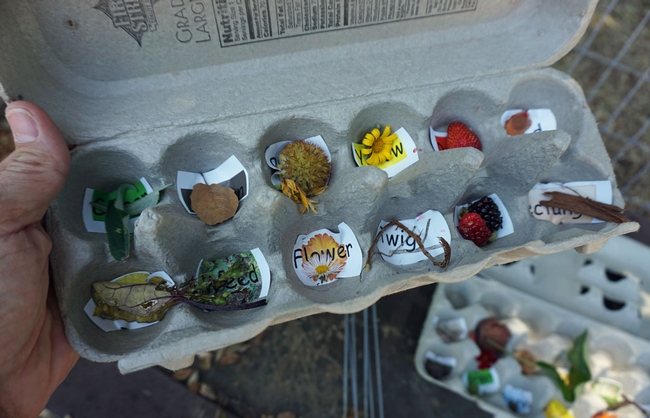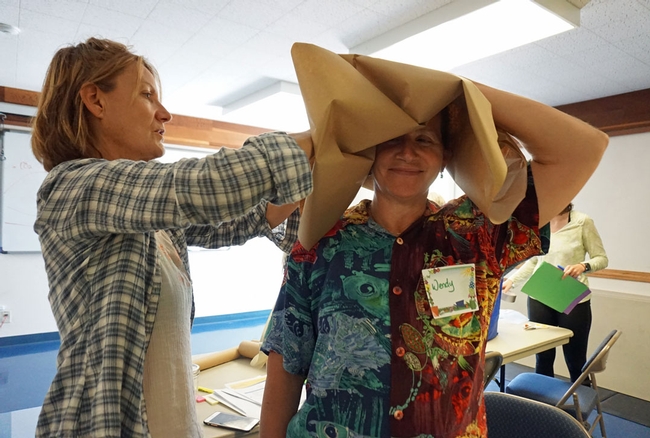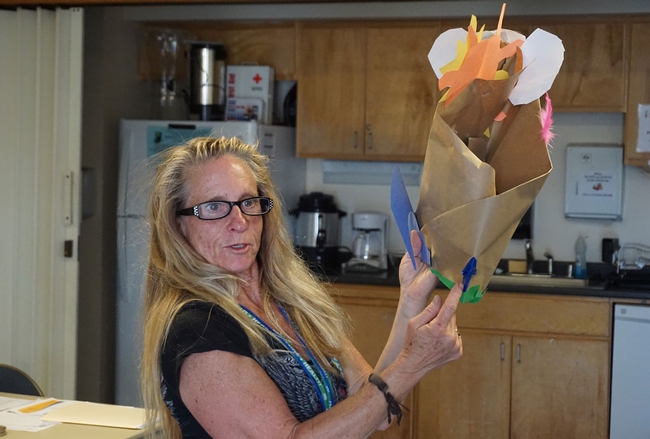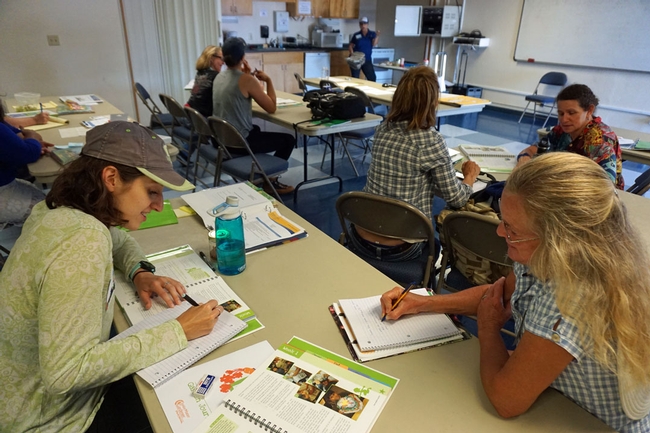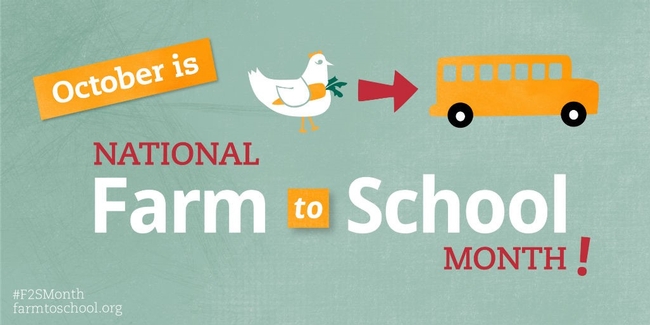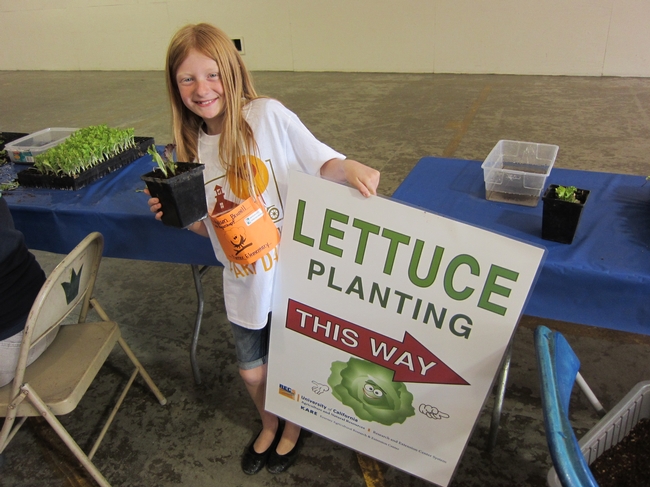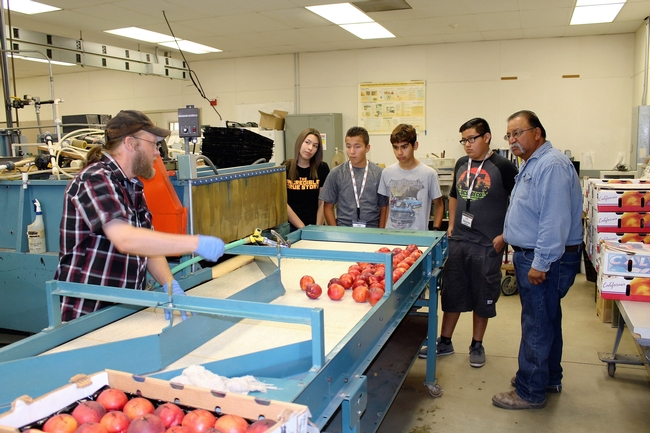Posts Tagged: school
A Sacramento coalition wants to serve 1 million healthy meals to children this summer
When school's out, many children who live in poverty no longer eat nutritious meals like they do during school as part of the free and reduced-cost school lunch program.
UC Agriculture and Natural Resources' Expanded Food and Nutrition Education Program (EFNEP) in Sacramento County has joined a coalition to promote the summer meals program, which is aiming to serve one million meals during summer 2018.
The coalition was formed by State Sen. Richard Pan, who invited Sacramento students to the State Capitol for a picnic May 22 launching the “Million Meals Summer.”
“In Sacramento County, on average 1.9 million free or reduced-price lunches are served each month while school is in session,” said Sen. Pan. “For so many of these children, school meals are their primary source of nutrition.”
In the summertime, the number of lunches served drops to less than 10 percent of the school-year number.
“Over the last couple of years, my office has worked with a growing number of organizations to help close the gap of child nutrition,” Sen. Pan said.
At the picnic, Sen. Pan, a pediatrician, reminded the children that eating healthy through the summer will get them ready to learn when school starts again.
Sen. Pan said Kim Frinzel, associate director of the California Department of Education nutrition services division, is leading the effort to set up sufficient meal sites and encourage children to attend.
“You get a great meal,” Frinzel told the students. “You get to hang out with your friends. And you get to participate in fun activities. Clap if you will help us serve a million meals.”
Vanessa Kenyon, EFNEP program supervisor for Sacramento and San Joaquin counties, said EFNEP will provide nutrition education training for Samuel Merritt University nurses-in-training.
“Summer meals are provided at 140 sites in Sacramento County. If the children stick around after eating, they can take part in enrichment programs. The student nurses will fulfill a portion of their service hours by sharing nutrition education resources and activities at the meal sites,” Kenyon said.
The UC EFNEP program, which serves 24 counties in California, assists limited-resource families gain the knowledge and skills to choose nutritionally sound diets and improve well-being.
The United Way California Capital Region heads the coalition of community, business and state partners supporting the Million Meals Summer in Sacramento County.
Why I'm the cupcake police
Put yourself for a minute in some kid-sized shoes. Let's call you Maggie. You are in third grade. Your dad works full time and he picked you up from the afterschool program at 6:00 p.m. You and dad got home about 7:00 p.m. because you had to stop by QuikMart to pick up something for dinner and put a little gas in the car. When you got home dad cooked the frozen pizza and you sat down to eat and drink your soda around 7:30 p.m. By the time you finished eating, took your shower, helped dad clean-up and got in bed it was 8:45 p.m.
In the morning you hurry to put your clothes on, brush your hair, brush your teeth and get everything in your school bag for the day. Dad needs to drop you off at school at 7:30 a.m. so he can get to work on time. You grab a bag of chips as you run out the door, rubbing your eyes and looking to make sure you didn't put your shirt on backwards again.
Somewhere around 10:00 a.m. your tummy starts to growl. You feel your mouth start to water a little and your eyes droop. Looking at the clock you count the minutes until lunch. At 11:25 , one of your classmate's parents comes in with a tray of cupcakes to celebrate her birthday! Your stomach jumps at the sight of pink butter cream frosting piled high on the little cakes. Your teacher hands one to each student in the class and you savor every delicious bite.
Fifteen minutes later the lunch bell rings. Your teacher walks everyone over to the cafeteria and you get in line for school lunch. You feel embarrassed to eat school lunch and since you ate that cupcake you're not really hungry anyway. You plop a few things on your plate making a face. Sitting down you pick at the food until the custodian says you can get up and go play. You dump your tray with most of the food still on it and run outside chasing your friends onto the blacktop.
Back in class you feel energized after your game of handball. Your face is red and you're a little sweaty from all the running around. Your teacher announces that your group won the weekly contest and each of you will get to pick from the candy bag. That sounds great to you because you are starting to get hungry again. You put a few pieces of candy in your mouth. You get back to work on your math problem but it's the afternoon and you always have trouble concentrating in the afternoon…
Maggie is just one of more than 30 million children in the U.S. who qualify for free or reduced-price school meals through the USDA school meal program. Students like Maggie may rely on food at school for up to 50 percent of their daily calories and school meals represent a larger portion of the school-day caloric and nutrient intake for food insecure children. In addition, research shows that income level, educational attainment and family composition impact diet quality and physical activity.
The national school lunch program, while not perfect, is intended to ensure students like Maggie are offered a variety of fruits and vegetables and whole-grain rich foods every day. There are limits to the amount of sodium, saturated fat, trans-fat and calories that are offered as part of a school meal. Studies have shown that child nutrition programs improve diet quality and academic performance for children in low-income and food-insecure households.[1]
When we offer our children and students food with little to no nutritional quality for a reward and cupcakes to celebrate a birthday, we are impacting their overall dietary quality for the day. For Maggie, the problem is compounded by the fact that she does not have access to a varied and nutritious diet at home. She has nothing to fall back on when she doesn't get a nutritious meal at school and she fills up on empty calories instead. Childhood is an important time when people develop lifelong eating and physical activity patterns.
So when I am faced with the dilemma, once again, of speaking up and being the cupcake police or staying silent and going along with treats at school, I think of Maggie.
What can you do to create healthier schools for all children:
- Look up your School Wellness Policy. Every school that participates in the School Meal Program has one. However, many times they were written and never revisited. Check your district web page or go to the Dairy Council finder. School Wellness Policies outline what is and is not allowed to be offered in the classroom or fundraisers during school.
- Offer non-food rewards for positive behaviors: Extra physical activity time or recess, the opportunity to eat lunch in the cafeteria with the teacher, special privileges like “line leader” for the day, or the opportunity to go out to the garden. For more healthy reward ideas visit Healthy Food Choices in Schools.
- Celebrations that reinforce health: Include physical activity like a dance party in your celebration (see GoNoodle for all kinds of fun activities and brain breaks), ask parents to bring in a donated book for the class instead of cupcakes (see Books for Birthdays), if you are going to have food, make sure non-nutritious items are limited to one per student.
- Eat lunch with your student(s): If you're a parent, check-in with your school. Many schools allow parents to eat lunch with their children if notified in advance. If you're a teacher, eating with your students is a great way to teach and model healthy eating behaviors. Interested in learning more about the importance of school meals? Find out here.
- Is the school offering a variety of fruits and vegetables? Can the students all see the food and serve it safely? Are any local foods available? If not, set a meeting with the Food Service staff to discuss your ideas and see how you can help.
[1] https://www.ers.usda.gov/webdocs/publications/84003/eib-174_summary.pdf?v=42905
Go back-to-school with a garden
It's that time already when the kids start heading back to school and meals go back to a strict schedule. It can be easy to turn to take-out and other convenience foods to make meal times more manageable, especially during the rush of back-to-school. However, there's a long school year ahead and focusing on good habits now can set the tone for the next nine months. The old adage that “food is fuel” rings true - healthy choices help kids maintain a healthy weight, avoid health problems, manage energy levels, and sharpen their minds.
How can we reinforce healthy eating habits during the hustle and bustle of back-to-school?
School gardening offers children opportunities to get outdoors and exercise while teaching them a useful skill. Gardens containing fruits and vegetables can revise attitudes about particular foods; there is even a correlation between growing fruits and vegetables and consumption of these products. Gardens are likely to transform food attitudes and habits and in school gardens this can be especially impactful when combined with nutrition education.
In addition to health and nutrition benefits, gardening also offers hands-on experiences in a variety of core curriculum which includes natural and social sciences, language arts, nutrition and math. This can play a big part in supporting your kids' education outside of the classroom.
Benefits of school gardening:
- Physical health
- Social and emotional health
- Academic achievement
- School and community benefits
- Enhance nutritional preferences, and
- Increased self-esteem
Learn more with the UC Master Gardener Program
The UC Master Gardener Program is a community of volunteers across California, under the UC Division of Agriculture and Natural Resources, that extends research-based information on gardening to the public. If your school does not have a school garden program, contact the UC Master Gardener Program in your county to learn about the possibility of new school garden programming and other garden-education you and your children can participate in.
The UC Master Gardener Program can connect you with local community gardens, and or provide the information you need to get started with your own school or home garden. Many programs have relationships with local schools to support garden-based education.
“Dig it, Grow it, Eat it”
The UC Master Gardener Program in Marin County hosts a portable field trip for school-age youth called “Dig it, Grow it, Eat it.” This award-winning program emphasizes engagement and the many learning opportunities that take place in nature. Youth learn all about growing edible plants from seed to harvest and educators get the support of University-trained UC Master Gardener volunteers to deliver the curriculum.
Whether or not you already have a school garden program your family can engage in, reach out to the UC Master Gardener Program to get the help and information you need to inspire healthy eating and an active lifestyle in your children. Now is a great time to plan and plant your winter garden, just in time to get your kids back to school and excited to be learning … wherever that learning takes place!
The UC Master Gardener volunteers are eager to help with all of your gardening needs. The UC Master Gardener Program can work with teachers and community volunteers to provide gardening information and consultation in the support of school gardens. With local programs based in more than 50 counties across California, there is sure to be a workshop or class near you. Visit our website to find your local UC Master Gardener Program, mg.ucanr.edu.
School gardens get new life from UC Cooperative Extension volunteers
When children grow their own fresh fruits and vegetables, they are much more likely to eat healthy food, so for decades California politicians, teachers and nutrition educators have advocated for a garden in every school. However, UC Cooperative Extension experts in Santa Barbara and San Luis Obispo counties found that garden care can dwindle over time.
“Students and their parents ‘age out' of their elementary schools,” said Shannon Klisch, UC CalFresh community education supervisor in San Luis Obispo and Santa Barbara counties. “The turnover in expertise and level of commitment can vary widely, leaving some schools with either weedy, abandoned vegetable patches, or no garden support at all.”
UCCE offers UC CalFresh, federally funded nutrition education for CalFresh recipients (formerly called Food Stamps). UC CalFresh nutrition educators in Santa Barbara and San Luis Obispo counties saw a need to mobilize highly trained community members who could develop, support, sustain and teach from school gardens. UC CalFresh joined with UC's 4-H Youth Development, Master Food Preserver, and Master Gardener programs to launch a pilot project called “UC Garden Nutrition Extenders.”
“We don't have enough staff to work the gardens in every school, so we've started recruiting and training volunteers,” said Lisa Paniagua, school garden sustainability coordinator for the UC Garden Nutrition Extender program in San Luis Obispo and Santa Barbara counties.
“By enlisting passionate volunteers, nutrition educators could significantly multiply the number of students who had access to school gardens, nutrition education, and training in science, technology, engineering, and math (STEM) in the garden,” said Katherine Soule, Ph.D., youth, families, and communities advisor in San Luis Obispo and Santa Barbara counties.
Klisch said UC Garden Nutrition Extenders are local members of their school communities.
“They are often parents, neighbors or staff and they have a personal investment in seeing the youth and the school environment flourish, which makes for a much more sustainable intervention and increases community capacity to sustain a garden program," she said.
Paniagua, Klisch, and Soule created a hybrid training program integrating volunteers and educators from UC CalFresh, UC Master Food Preservers, UC Master Gardeners and 4-H. They selected a 4-H gardening and nutrition curriculum written by researchers at Texas A&M AgriLife Extension, which includes engaging, student-centered, experiential learning while dividing time between the garden and the classroom. The curriculum reinforces goals in Common Core and Next Generation Science Standards, policies that guide public school teaching.
“Teachers will want to know we are familiar with curriculum standards. Applying them adds value to these classes,” Paniagua said.
In July, the third cohort of future UC Garden Nutrition Extender volunteers gathered at UC Cooperative Extension in San Luis Obispo to learn how they can help schools transform their gardens into fruitful learning activity centers for the students.
One member of the new cohort is Jill Marie, a certified Master Gardener in San Luis Obispo County.
“I live by a school and they have garden beds that are not kept up. I want to get involved and get to know the kids,” she said.
The volunteer teachers learn by conducting the indoor and outdoor curriculum activities and food demonstrations over a four-week period. Their first foray into the UCCE Sunshine School Demonstration Garden began with a mindfulness practice.
“Close your eyes, and just listen,” Paniagua instructed. A moment later she asked, “What did you hear?”
To encourage students to take a closer look at the garden, the class was sent out with egg cartons labeled for a 12-item scavenger hunt, and later asked to select one item to discuss. Reporting on topics are part of Common Core standards for students in third- through fifth-grades and creates discussion learning topics around science, math, engineering, art, and even poetry.
Back in the classroom, the trainees began work in pairs on the next lesson, “Know & Show Sombrero.” With paper, tape and a bag of craft supplies – balloons, ribbons, foam stickers and construction paper – the extenders made hats that represent everything a plant needs. One group used a yellow balloon to symbolize the sun, another had water drops raining down from the brim. A third group sprinkled glitter to represent the nutrients in the soil.
“Why are we putting these on a hat?” Paniaqua asked the class. “The exercise is useful for kinesthetic learners. It reinforces what they learn. At the end, we talk about it and develop conversation skills.”
The half-day session ended with a tasting of purple, yellow and orange carrots.
“In your journals, write words to describe the smell, sight, taste and feel of the three colors of carrots,” Paniagua said.
One of the volunteers Christina Lawson, director of nutrition for Coast Unified School District, laughed.
“We tried to serve purple carrots. Pfft. Zip,” she said. “I'm excited about this. If the kids try them before coming to the cafeteria, it would make my life so much easier.”
This project is funded through local grant awards from the National 4-H Council in collaboration with Lockheed Martin, and UC CalFresh Nutrition Education Program, which is a joint agreement among the U.S. Department of Agriculture/Food and Nutrition Service (USDA/FNS), the California Department of Social Services (CDSS) CalFresh branch, and the University of California Cooperative Extension (UCCE).
October is National Farm-to-School Month
Schools across the country are celebrating local connections to local food producers in October during National Farm to School Month. Education and outreach activities such as school gardens, cooking lessons and field trips are teaching students about healthy, local foods and food's journey from the farm to their forks.
There are plenty of opportunities for teachers and schools to celebrate and get involved in National Farm to School Month with the University of California Division of Agriculture and Natural Resources (UC ANR). Here are a few ideas to get you started.
4-H youth development
Launch a 4-H Club at your school. The 4-H Youth Development Program emphasizes enrichment education through inquiry-based learning. Core content areas include Healthy Living as well as Science, Technology, Engineering and Math (STEM). Clubs have access to a wealth of curricula materials exploring food, agriculture and natural resources. 4-H also offers the Ag in the Classroom school enrichment program.
Boots on the ground
Invite UC ANR academics and program staff to your career day or science fair or to make a classroom presentation. Specialists from Master Gardeners, Nutrition Education, Project Learning Tree, California Naturalist and other UC ANR programs know how to engage and inspire your students.
Some programs, including Project Learning Tree, offer "train the trainer" professional development workshops that equip educators with the skills and knowledge to teach concepts in their own classrooms. Project Learning Tree also provides free activity guides to teachers who attend their workshops. The guides highlight differentiated instruction, reading connections, and assessment strategies and offer ideas to integrate technology into classroom instruction,
Research and Extension Centers
Take your students on a field trip to a UC ANR Research and Extension Center (REC). The nine RECs in California are focal points for community participation and for active involvement in current and relevant regional agricultural and natural resource challenges.
Visiting a REC offers students a unique opportunity to learn about food production through the lens of applied science research in plant pathology, integrated pest management, conservation tillage, water conservation, development of new crop varieties, and much more. Some RECs also host extended education programs such as Sustainable You! Summer Camp and FARM SMART.
The 2016 National Farm to School Month theme is One Small Step, which highlights the easy ways anyone can get informed, get involved and take action to advance farm to school in their own communities and across the country.
Each week will have a different focus:
- Education (October 3-7)
- Healthy School Meals (October 10-14)
- Farmers & Producers (October 17-21)
- The Next Generation (October 24-28)
Join the celebrations by signing the One Small Step pledge then take your own small step to support healthy kids, thriving farms and vibrant communities this October by partnering with UC ANR.
This story en español.


